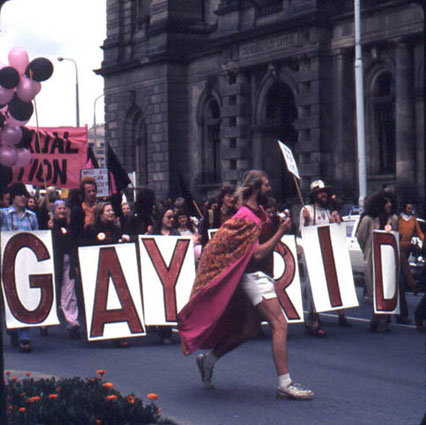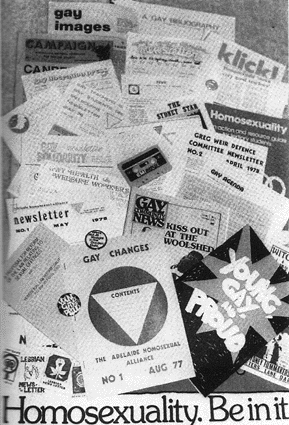|
"Melbourne - Queen City of the South" Melbourne Gay & Lesbian History series
HOMOSEXUAL LAW REFORM IN VICTORIA | |||||||||||||||||
|
listen:
| |||||||||||||||||
|
Homosexual law reform had been talked about in Victoria since the late 1960s and especially after 1970 as gay rights groups were founded. Efforts by the Labor Party after South Australia's success in 1975 got nowhere and it was only after the police Black Rock Beach entrapment scandal in early 1977 that the issue took off again.
A number of things had changed. South Australia and the ACT had decriminalised without the sky falling in. Victoria had a new more liberal premier, Dick Hamer, and the climate in the community was shifting towards acceptance of the rights of gay people.
Most importantly, gay and lesbian activists had started to take the issue seriously and had formed a group to campaign for changes to the law - the Homosexual Law Reform Coalition. This organisation was to keep up the pressure over the next several years, arguing, persuading, cajoling timid politicians towards reform - and stirring gay people to get off their bums and do something to help the cause.
Most of the work of the HLRC was sheer hard slog, the 'painstaking collection of evidence and details, and boring correspondence and conversation with decision-makers and those who influence them', as the group later put it. Members met frequently with Haddon Storey, the Attomey-General, to explore issues, answer questions, soothe fears. When, in mid-1977, Storey expressed doubts about whether the public would support law reform on the basis of equality, the HLRC persuaded the Age Poll to do some public opinion research. This revealed that 57 per cent of Victorians were thought the law should treat homo- and heterosexual acts in the in the same way, while only 30 per cent were opposed to this.
Meanwhile, the HLRC - which was never more than about a dozen people - were busily writing letters to the papers; printing and distributing leaflets within the gay community; sending off press releases to the media.
In May 1978, the HLRC launched a glossy kit and sent it to politicians and the media declaring: 'The people approve. A bill is ready. Why delay? Equality for homosexuals. now.' To make it even easier for the politicians, the kit included a complete draft bill which would decriminalise homosexuality and ensure complete legal equality between sexual acts regardless of the sex of those involved. Copies of articles and editorials, lists of bodies known to support law reform - all hammered away at the idea that the time for reform had arrived.
The community added its voice. The Attorney-General's office was said to have received more letters on this issue than on any previous, and overwhelmingly they were supportive of reform.
On 18 December 1980 the law was passed by 72 votes to seven and it came into effect early the next year. In many ways, the new law was more liberal than anyone - supporters or critics - would have expected, providing absolute equality between male-female, male-male and female-female sex acts. The best law in the English-speaking
world the supporters claimed, with some justice. | |||||||||||||||||
| © text copyright Graham
Willett, Australian Lesbian & Gay Archives 2002 HOME | |||||||||||||||||
image: National Archives of Australia | |||||||||||||||||

